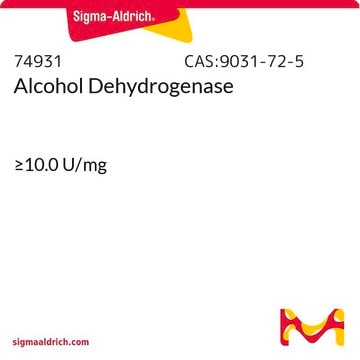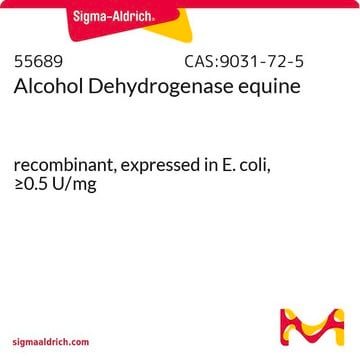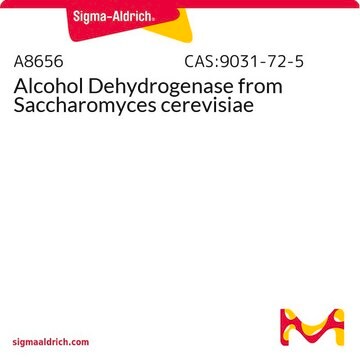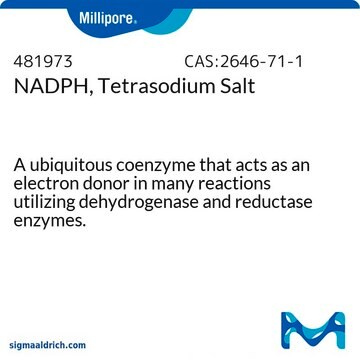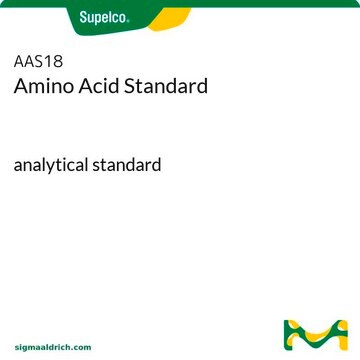This product is recombinant enzyme produced in e. coli. The original species information is not available.
Wichtige Dokumente
49641
Alkoholdehydrogenase, rekombinant aus E. coli
≥500 U/mL
Synonym(e):
Alkohol:NADP+-Oxidoreduktase
Größe auswählen
About This Item
Empfohlene Produkte
Rekombinant
expressed in E. coli
Form
liquid
Spezifische Aktivität
≥500 U/mL
Methode(n)
cell based assay: suitable
Farbe
light brownish-yellow to brown-green
Eignung
suitable for molecular biology
Anwendung(en)
life science and biopharma
Lagertemp.
−20°C
Suchen Sie nach ähnlichen Produkten? Aufrufen Leitfaden zum Produktvergleich
Allgemeine Beschreibung
Alcohol dehydrogenase has a homodimeric structure with a co-enzyme binding domain at the C-terminal and an N-terminal catalytic domain. The active site is located at the interdomain cleft.[1] Binding of NAD+ in the active site [2] causes conformational changes that create the binding site for the alcohol substrate.[3]
Anwendung
Biochem./physiol. Wirkung
Einheitendefinition
Signalwort
Warning
H-Sätze
P-Sätze
Gefahreneinstufungen
Eye Irrit. 2
Lagerklassenschlüssel
10 - Combustible liquids
WGK
WGK 3
Flammpunkt (°F)
Not applicable
Flammpunkt (°C)
Not applicable
Persönliche Schutzausrüstung
Eyeshields, Gloves
Hier finden Sie alle aktuellen Versionen:
Besitzen Sie dieses Produkt bereits?
In der Dokumentenbibliothek finden Sie die Dokumentation zu den Produkten, die Sie kürzlich erworben haben.
Kunden haben sich ebenfalls angesehen
-
From what organism is this alcohol dehydrogenase from
1 answer-
Helpful?
-
Active Filters
Unser Team von Wissenschaftlern verfügt über Erfahrung in allen Forschungsbereichen einschließlich Life Science, Materialwissenschaften, chemischer Synthese, Chromatographie, Analytik und vielen mehr..
Setzen Sie sich mit dem technischen Dienst in Verbindung.

